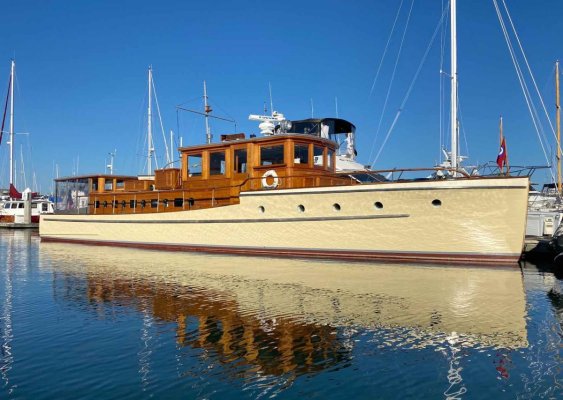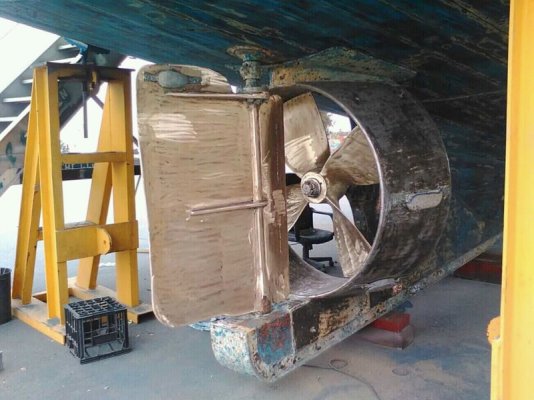Simi 60
Guru
- Joined
- Jul 1, 2016
- Messages
- 5,482
- Location
- Australia
- Vessel Make
- Milkraft 60 converted timber prawn trawler
Ours has a large s/s plate attached to the bottom and on that, a s/s bolt and an anode, on the inside a cable connected from that to earth on the main switch panel
Been like that for decades
4 years ago "Experts" said no and we needed a Guest sintered bronze grounding plate, I thought it odd given what had been there for decades but hey, I am not an "expert" so got bent over for several hundred dollars.
Also had to connect rudder, engine and and and to it
2 years ago we got rid of 70% of our anodes, I felt things were better, another expert who came out, spent several hours aboard with various meter's and no charge or on sell agreed and......told us to get rid of the various earthing cables from rudder, engine and and and which we did
Now, the expensive sintered bronze plate is gone, 1/4 inch bronze bolts appear sheered.
Old s/s plate with welded bolt remains nearby
Was thinking of putting a big anode on and hooking the earth cable to that again
Guy working on ours with 70ft of timber a lot older than ours has nothing.
Thoughts on this?
Been like that for decades
4 years ago "Experts" said no and we needed a Guest sintered bronze grounding plate, I thought it odd given what had been there for decades but hey, I am not an "expert" so got bent over for several hundred dollars.
Also had to connect rudder, engine and and and to it
2 years ago we got rid of 70% of our anodes, I felt things were better, another expert who came out, spent several hours aboard with various meter's and no charge or on sell agreed and......told us to get rid of the various earthing cables from rudder, engine and and and which we did
Now, the expensive sintered bronze plate is gone, 1/4 inch bronze bolts appear sheered.
Old s/s plate with welded bolt remains nearby
Was thinking of putting a big anode on and hooking the earth cable to that again
Guy working on ours with 70ft of timber a lot older than ours has nothing.
Thoughts on this?


